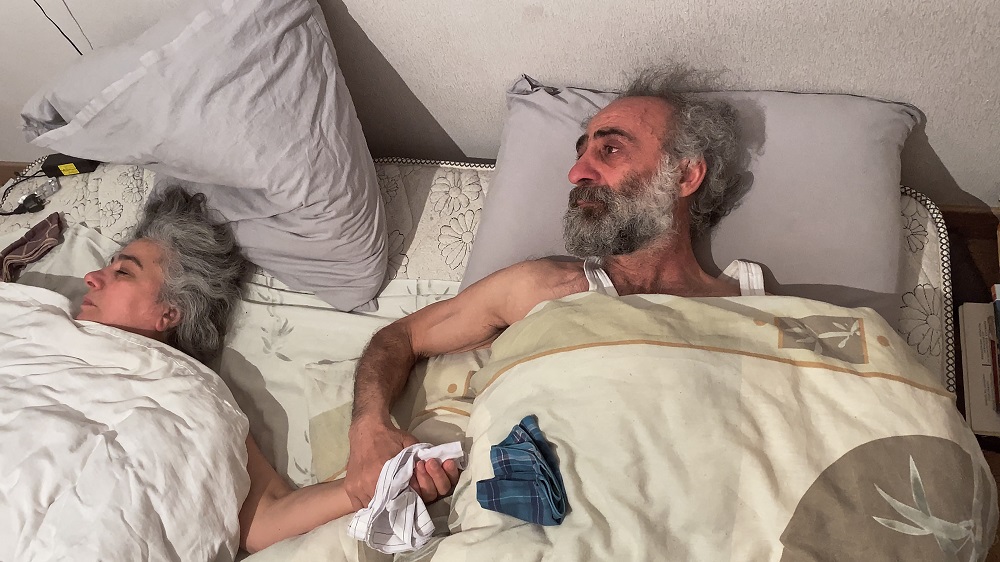In September 2020, the Artsakh (Nagorno-Karabakh) War erupted. When her family stopped hearing from her younger brother who was fighting on the front lines, Shoghakat Vardanyan picked up her phone camera and started filming to chronicle her family’s search for her brother.
These video recordings would result in the documentary film “1489,” Vardanyan’s directorial debut that shows the realities of war through the eyes of the families of the dead. By expertly editing her video clips to tell a cohesive story, the first-time filmmaker provides an unflinching access to their lives, ultimately giving the audience a timely reminder of the human cost of war.
[More MoMI 2024 Coverage: ‘Magic Mountain’: A Sanatorium from One’s Childhood Becomes a Microcosm of a Post-Soviet Nation]

A Woman Chronicles Her Family’s Grief Using Her Phone
Through a series of opening title cards, “1489” provides enough context to the audience. We learn that the main point of contention in these wars — dating back 1988 — concerns Artsakh, a historically Armenian territory. During the Soviet era, the region was handed to Azerbaijan, which resulted in the decades-long war for the territory and the right to national self-determination by the Armenians living there. The wars continue to this day, with alternating stages of relative stability and deadly military operations.
In this climate, the documentary introduces us to the filmmaker’s family. Shoghakat’s younger brother, Soghomon, was close to completing his mandatory military service when the war broke out in September 2020. Seven days into the war, Soghomon went missing. Seeing her parents’ anguish, as well as feeling it herself, Shoghakat decides to document the family as they anxiously wait to hear about Soghomon’s fate.
By filming their predicament, Shoghakat effectively channels their collective grief to make a film that provided them with some semblance of escape from the situation and the upcoming tragic news about her brother’s death.
“If Soghomon comes back…”
Vardanyan adroitly juxtaposes two Armenian vantage points of the war. On one side, politicians and television shows fan the flames of patriotism and justify the inevitability of war under the guise of Armenophobia perpetrated by the Azerbaijani government. On the other side, Vardanyan films the quiet grief her family feel; something that represents the same grief everyone else feels.
We see her father busying himself with some woodwork and decor. And when asked what all those things are for, he simply responds:
“If Soghomon comes back, it will all have some meaning.”
Finally, a discovery in 2022 gave meaning to the film’s title, which makes for a very tough watch. There isn’t any hint of artificiality here; Vardanyan captured the whole gamut of raw emotions, from the heartbreak, the strategic filming of her parents processing their grief, and the closure it somehow provided them.
[Related Review: ‘Aurora’s Sunrise’ is an Impassioned Admonition Not to Forget—and Deny—the Horrors of History]
A Harrowing Reminder of the Real Cost of War
I found myself in awe of how Vardanyan, despite being someone who had never gone to film school to study filmmaking, managed to make a documentary that captures the grief her family felt — and certainly still feel today.
For the director, the emotions overwhelming their household made her grab her phone and start documenting their daily ordeal. In her director’s notes, Vardanyan maintained that she hadn’t planned to make a film. However, the days of waiting and recording turned into two years of documenting and searching for her brother. Ultimately, she hopes that the footage she made could help other people going through the same war. The shared pain, grief, and trauma — all these might help others to take action and address the senselessness of wars.
“1489” ends the way it began, with a series of title cards. Among the many casualties include more than 200 people who are still considered missing in action. Also, according to human rights defenders, 80 individuals are being held prisoners of war by Azerbaijan.
The story of the Vardanyan family is just one among the many experiences families in war-torn lands experience every day. If anything, “1489,” while a challenging film to watch due to its subject matter, is nonetheless an essential viewing. Having a non-filmmaker and her phone to tell a timely story, this documentary highlights the continuous search other families still undertake, if at least they could get the much-needed closure that they deserve.
All these, more importantly, point to the real cost of war: with two sides fighting for their respective ideologies and advocacies, who really loses in the end?